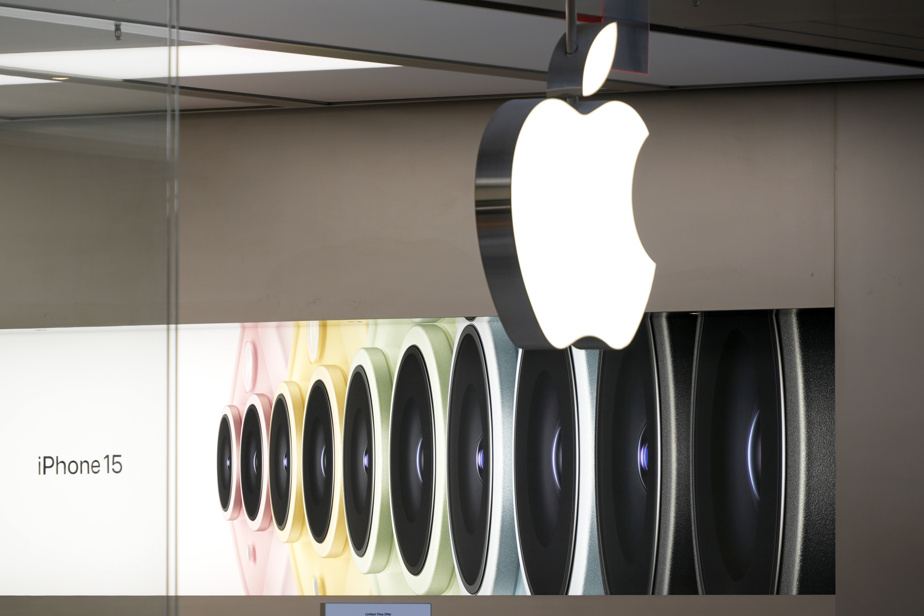(San Francisco) Apple is expected to use its annual developer conference, which begins Monday, to show how it is integrating artificial intelligence (AI) into its products and to try to catch up with its larger, much more advanced competitors.
Since the launch of ChatGPT, OpenAI’s generative AI interface, in November 2022, Microsoft, Google, Amazon and Meta have been working hard to incorporate this technology into their offerings.
If artificial intelligence has already been very present in its iPhone, iPad or Mac for many years, Apple has not made any specific announcement so far, postponing possible new AI developments until later.
During the presentation of the group’s latest results at the beginning of May, the managing director, Tim Cook, mentioned announcements in the coming weeks, without further details.
Therefore, the annual developer conference (WWDC), which takes place from Monday to Friday, “represents the most important event for Apple in a decade with, in the background, the pressure to present to developers and consumers a generative AI package,” says Wedbush Securities analyst Dan Ives.
Many, including the latter, expect the Apple firm to unveil a new version of its iOS operating system, the 18th, powered by artificial intelligence.
According to several American media outlets, Apple has previously formed a partnership with OpenAI, which will allow it to use the start-up’s language models, these gigantic databases allowing it to answer a question asked in everyday language.
For Carolina Milanesi, analyst at Creative Strategies, these improvements and new features should help to strengthen the attractiveness of the brand’s products, first and foremost the iPhone.
“The goal for Apple is to get people to replace their iPhone,” insists the analyst. “We’ll see if Apple gives them sufficient reasons to do so. »
“The moment is crucial for Apple,” insists Gadjo Sevilla, analyst at Emarketer, for whom the WWDC communication is a “litmus test” of the ability of the Cupertino (California) group to monetize generative AI as have already known do it Google and especially Microsoft.
This new challenge comes as Apple tries to reconnect with its legend, that of a company accustomed to launching products and services likely to cause a break in consumption habits, from the Macintosh to the iPhone, including the ‘iPod.
It made a first significant shift in February with the presentation of its “mixed” (virtual and augmented) reality headset “Vision Pro”.
However, in its current version, it is a high-end product ($3,499 per unit), which is only aimed at a limited part of Apple’s traditional audience.
In addition to the lead taken by its competitors, this quest for new successes is made more urgent for Apple by the decline in iPhone sales, which fell by 10% year-on-year in the first quarter of 2024.
With generative AI, the technology group is investing, in addition to the devices themselves, in its services activity, which has become the lifeblood of Apple’s growth.
According to Canalys, 16% of smartphones shipped this year will be equipped with generative AI features, a proportion it expects to rise to 54% in 2028.
Some analysts point to the issue of the use of personal data, which is essential to generative AI, but on which the group has always been protective and uncompromising, to the point of making it one of the reasons for its popularity.
“Wanting to control the AI ecosystem too closely would cause Apple to lose ground,” warns Gadjo Sevilla.




